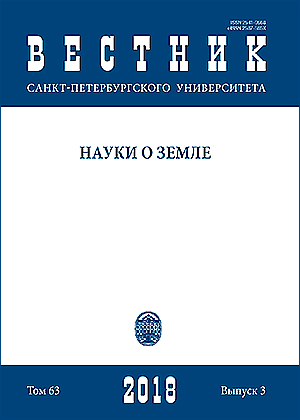Measuring the connectivity of cities in Asian Russia for the implementation of breakthrough information and communication technologies
DOI:
https://doi.org/10.21638/spbu07.2018.301Abstract
Currently, breakthrough information and communication technologies are being developed, related to Tactile Internet and full immersion in virtual reality. Their implementation is expected in the next decade, but now it is necessary to foresee the possible socio-geographical consequences of such implementation. The most critical parameter of new technologies is a signal delay. Therefore, based on the author’s database on telecommunication lines, the magnitude of the signal delay between all the cities of the macroregion of Siberia and the Far East was calculated. Based on the fact that generators of new services for breakthrough technologies will be located in cities or congestions of cities with a population of at least a quarter of a million people and the possibility of implementing new technologies with a delay of up to 1 millisecond, digital urban agglomerations have been singled out. Twenty-one digital agglomerations are identified. It is shown that the implementation of breakthrough technologies will lead to a new digital inequality when the Tactile Internet in its entirety can be accessed only in about half of the cities and will touch just over 80 percent of all the townspeople. The regional specifics of the implementation of breakthrough technologies in Asian Russia are revealed, manifested in the absence of a new digital inequality in the Kemerovo region and the Republic of Khakassia, insignificant (less than five percent) inequality in the Omsk and Tomsk regions, and in the impossibility of providing tactile Internet services in six regions.
Keywords:
digital inequality, connectivity of space, telecommunication network, signal delay, Tactile Internet, digital urban agglomeration, Siberia, the Far East
Downloads
References
References
Downloads
Published
How to Cite
Issue
Section
License
Articles of "Vestnik of Saint Petersburg University. Earth Sciences" are open access distributed under the terms of the License Agreement with Saint Petersburg State University, which permits to the authors unrestricted distribution and self-archiving free of charge.






